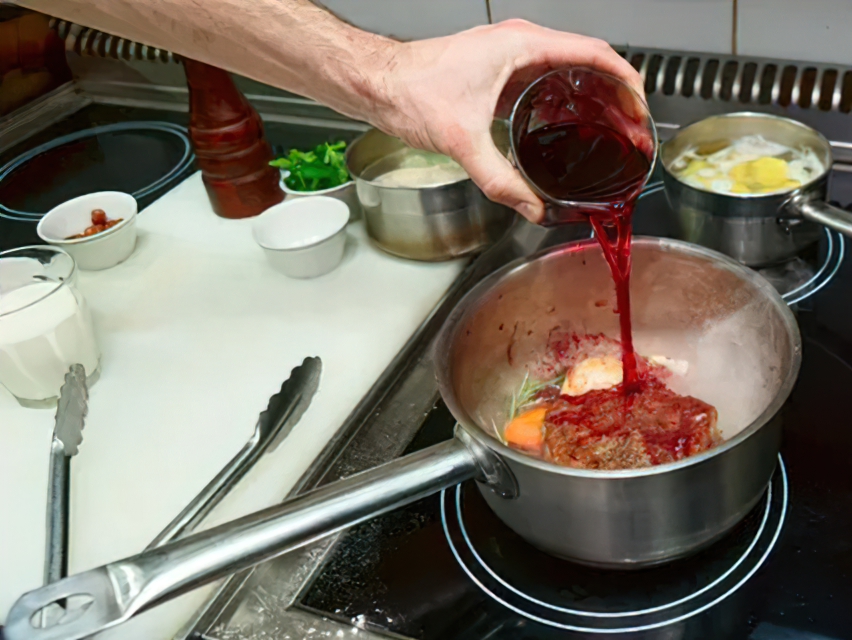Unleash your culinary creativity by incorporating spirits into your dishes. In this article, we’ll explore the art of cooking with spirits, including tips and techniques for enhancing flavors, pairing with food, and mastering the use of liqueurs. Let’s elevate your cooking skills and bring a touch of sophistication to your dining experience.
-
Content
Introduction to Cooking with Spirits
Cooking with spirits is an exciting way to enhance the flavors of your dishes while adding an extra layer of depth and complexity. Spirits such as rum, brandy, and whiskey can transform ordinary recipes into extraordinary culinary experiences. This article explores the art of cooking with spirits, providing you with tips and techniques to elevate your cooking skills and impress your guests.
-
Choosing the Right Spirit for Your Dish

One of the most important aspects of cooking with spirits is selecting the appropriate alcohol for your recipe. Keep in mind the following tips when making your choice:
- Choose a spirit that complements the flavors of your dish. For example, brandy pairs well with red meat, while rum works best with tropical fruit-based desserts.
- Consider the alcohol content of the spirit. High-proof spirits will provide a stronger flavor, while lower-proof options are more subtle.
- Experiment with different spirits to find your favorites and develop your own unique style.
-
Safe and Effective Cooking Techniques
When cooking with spirits, it’s crucial to use the correct techniques to achieve the desired flavors while ensuring safety in the kitchen. Here are some key tips:
- Always remove the pan from the heat source before adding alcohol to avoid flare-ups.
- Allow the alcohol to cook off by simmering the dish for a few minutes. This reduces the alcohol content and enhances the flavor.
- Start with small amounts of spirits and adjust to taste, as adding too much can overpower the dish.
-
Popular Recipes Using Spirits
There are countless recipes that can benefit from the addition of spirits. Some popular options include:
- Flambeed dishes, such as Bananas Foster or Steak Diane, where the spirit is ignited for a dramatic presentation.
- Sauces and glazes, like whiskey BBQ sauce or bourbon pecan glaze, which add a depth of flavor to meats and desserts.
- Baked goods, such as rum-soaked fruitcake or bourbon chocolate brownies, where the spirits infuse the treats with rich, indulgent flavors.
-
Pair Wine with the Dominant Element
In more complex dishes, it’s essential to pair wine with the dominant element rather than the entire dish. This could be a specific ingredient, sauce, or cooking technique. For example, if you’re serving a dish with a rich, creamy sauce, consider choosing a wine with enough acidity to balance the dish’s richness, regardless of the protein used in the recipe.
-
Consider the Occasion
The atmosphere and occasion can also influence your wine pairing choices. For casual gatherings or informal meals, opt for versatile, easy-to-drink wines that can complement a variety of dishes. For more formal events or special occasions, you might want to choose a more luxurious or rare wine to elevate the dining experience.
-
Experiment with Regional Pairings
Another useful tip for wine pairing is to explore regional pairings. Wines from a specific region often complement the local cuisine, as they share common ingredients and flavor profiles. For example, a bold Italian red wine may pair beautifully with a hearty pasta dish, while a crisp Spanish white wine might be an ideal match for a seafood paella.
-
Don’t Be Afraid to Break the Rules
While following guidelines can help you create successful wine pairings, it’s essential to remember that personal preferences and individual tastes vary. Don’t be afraid to break the rules and experiment with unconventional pairings. Ultimately, the best wine pairing is the one you and your guests enjoy the most.
In Conclusion
As you explore the world of wine pairing, you’ll gain a deeper appreciation for the nuances and complexities of both wine and food. By understanding the basic principles of pairing, considering the dish’s flavor profile, and experimenting with different approaches, you’ll develop your skills and confidence in creating harmonious combinations. Remember to enjoy the journey and savor the delightful discoveries that come with mastering the art of wine pairing. Cheers!

